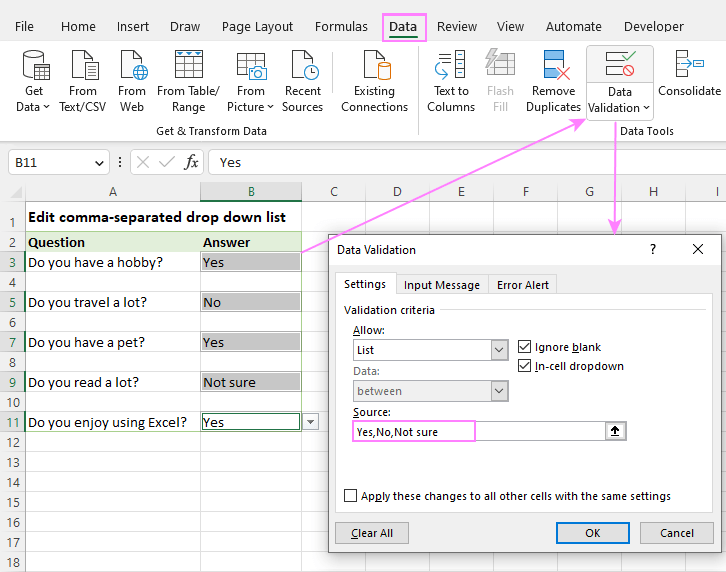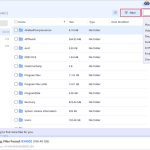Editing Excel drop-down lists involves modifying their source list or behavior. Key methods are outlined below.
Method 1: Edit Source Directly (Same Sheet)
Select the cell(s) with the drop-down list.
- Go to the "Data" tab.
- Click "Data Validation" in the Data Tools group.
- In the Data Validation dialog, under the "Settings" tab, locate the "Source" box.
- Directly edit the cell references or list items. Separate new items with commas if typing manually.
- Click OK.
Note: Works instantly for static lists or references on the same sheet.

Method 2: Edit Source via Named Range
Useful when the source list is used in multiple drop-downs.
- Locate the cell range storing the list items (e.g., A1:A5).
- Select that range.
- Type a new, descriptive name in the Name Box (left of the formula bar) and press Enter.
- Select a cell with the drop-down using this named range.
- Open Data Validation ("Data" tab > "Data Validation").
- In the "Source" box, replace any existing reference with the named range (e.g., =MyList).
- Click OK.
To Update Items: Simply edit the cells within the named range. The drop-down will update automatically.
Method 3: Use Excel Tables for Dynamic Sources
Ensures the source range expands automatically when new items are added.
- Convert your source list range to a table: Select the range, press Ctrl + T, ensure "My table has headers" is correct, click OK.
- Click inside the table, go to the "Table Design" tab.
- Note the Table Name (e.g., Table1) in the Properties group.
- Select the cell for the drop-down.
- Open Data Validation.
- In the "Source" box, enter a structured reference: =INDIRECT("Table1[Column1]") (Replace "Table1" and "Column1" with your actual table and column names).
- Click OK.
To Update: Add items directly below the last item in the table column. The table and drop-down source expand automatically.
Key Takeaways
- Direct Edit (Source Box): Quickest for same-sheet static lists or direct references.
- Named Ranges: Centralize source management, improve readability and maintenance.
- Excel Tables: Best for dynamic lists where items will be added frequently.
- Always verify the source reference in Data Validation Settings after editing.
- If source data is on a different sheet, using a Named Range is typically required.












